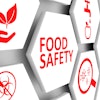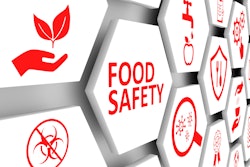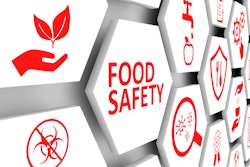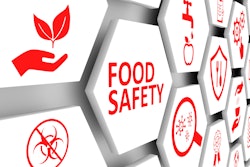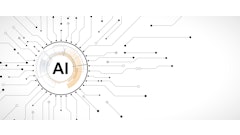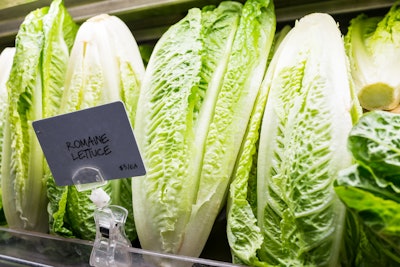
Today, more than ever, the world has learned how a lack of traceability can disrupt so many industries on a global scale. In an effort to standardize and enhance produce tracking throughout the supply chain, industry leaders introduced the Produce Traceability Initiative (PTI) as a framework of standards and best practices for food safety. Being PTI-compliant not only allows whole chain members to quickly pass produce tracking information to consumers, but also to the FDA in the event of serious foodborne illness outbreak investigations.
How can you benefit from produce traceability software?
With produce traceability software, growers and distributors can operate more efficiently. They can track the origin of fresh produce in real time to determine if it is locally grown and identify if it is defective or contaminated. The produce traceability software allows businesses to promote food safety and establish trust with consumers and work with the FDA more effectively to protect the health and safety of the public.
What about RFID tags?
Radio-frequency identification (RFID) tags and barcodes are the typical technologies used for fresh produce tracking in real time. RFID tags play a critical role thanks to their code-carrying capabilities, which, unlike barcodes, can be read without a direct line of sight. Certain limitations of this technology, however, prevent it from widespread use, such as its overall cost and readability.
RFID tags and other types of traceability software used to read them are simply too expensive to be used for item-level tagging in the produce industry. While they can be read without a direct line of sight, their readability highly depends on the density and orientation of the package. Fresh produce that is wrapped in too many layers of material or have shifted in their packaging are less likely to have their RFID tag read correctly. Water, which is a common element necessary for preserving fresh produce, can also interfere with RFID tag scanning.
What about UPC barcodes?
A more commonly used method for produce tracking in real time are UPC barcodes. Because they are more cost-effective than RFID tags, barcodes can be placed on an item-level and case-level. Their format can also be adjusted to coincide with specific packages and labels, and they are generally reliable for securing food safety data. Nowadays, buyers can easily scan barcodes on fresh produce labels to retrieve information on a product. This helps build trust between the industry and consumers, and also helps speed up the turnaround time on product recalls during FDA investigations.
What about QR codes?
Unlike UPC barcodes that have a rectangular shape with a pattern of vertical lines, QR codes are a pattern of points in a square. This shape allows scanners to read the code both vertically and horizontally, a simple change that speeds up inventory management and improves checkout times.
The pixelated pattern on the QR code also increases its ability to store information. A single QR code can hold more than 4,000 characters. With this capacity, the code can include product information and links to images, videos and dedicated websites. Employees and consumers can get important information about the part or product in front of them.
Implementing QR codes for inventory management.
QR code inventory management has several benefits for businesses. By incorporating this technology, it will make inventory tracking faster, more accurate and easier.
Dynamic information
QR codes allow a business to access and maintain detailed information about every piece of inventory. For equipment, the QR code can automatically connect to a website or database with information about maintenance and use. For production and sales, scanning the QR code will register an object's location. Employees can track products down the assembly line or shipments from the warehouse to a retail store.
Increased speed and accuracy
QR codes also increase inventory speed by providing a simple accounting process. All an employee needs to do is scan the code and it registers the item. One advantage of QR codes over UPC bar codes or RFID tags is that a scanner can read a QR code that is partially damaged. This ability eliminates mistakes during the manual entry of a damaged code. QR codes also exclude miscounts caused by multiple scans of the same item.
The benefits of QR codes on products
Part of the QR code software development process involves linking QR code scans to other platforms such as those used for POS transactions. Using QR codes on product packaging is changing the relationship between businesses and consumers. Since most consumers have smartphones, they can also take advantage of the information on the code.
Benefits for the consumer
One of the most significant advantages of inventory management with QR codes for consumers is their connectivity. When consumers scan a QR code on a label, it links them to helpful information. For example, in food items, the code can bring them to a website with expiration dates, ingredients, and nutrition information. Makers of perishable goods can send notifications when a product is about to expire. With other products, a QR code might lead consumers to a product manual or a video with assembly instructions.
Businesses can also connect QR code scans with loyalty programs and special offers. When consumers browse the code on their favorite snack, they might receive an offer for a discount, a chance at a prize, or some other benefit. In the future, businesses will connect their QR codes with augmented reality technology for an even more reliable consumer connection.
Benefits for the business
The modern business world depends on data. Inventory management with QR codes open up new ways to collect consumer information. It used to be that businesses could only track their products to the point of sale. When consumers scan products, it gives information about when a product is in use and where. The company can gather data about the amount of time between the sale of the product and its use.
QR codes allow businesses to provide more in-depth information about their policies and practices. A company that engages in fair trade practices can use the QR code to link information about the sources of the materials for their products. This leads to greater transparency and increased consumer trust.
Businesses can also leverage the promotional benefits offered to consumers to gain more information. A QR code scan might lead to a brief survey before it connects consumers to the final advantage.
QR codes also simplify unpleasant business processes. With real-time tracking, it is much easier to carry out product recalls without damaging the business's reputation. The company can also receive an alert when someone tries to resell a stolen product.
When businesses work with up-to-date information, they can make informed decisions about the future. Managing inventory with QR codes let companies see their supplies in detail. This knowledge will help avoid production delays due to missing parts or a lack of materials.
Inventory software designed to help
Inventory management for retail and manufacturing has become increasingly complex. At one point, businesses tracked their inventory by manual entry. This type of process worked when there were fewer parts to count and fewer choices at the checkout counter. By the 1960s, manual entry was too time-consuming, leading Japanese businesses to adopt a bar code that workers could scan or an RFID tag.
The UPC bar code is still in use today, but the amount of information it can hold is a limiting factor. In the 1990s, the Denso Wave Corporation developed QR codes to encode more information on a product label. This type of label helps organize complex production processes and improves consumer outreach.
Many traceability software systems exist in today's market for managing food safety traceability of fresh produce throughout the entirety of the supply chain. However, a large majority of these rely on a combination of software modules and plugins to capture information in real time from different stages in the supply chain, such as farming, processing, packaging and distribution. Additionally, not all of these systems are able to seamlessly integrate with platforms used by grocery retailers to capture data from products.
The best option for growers and distributers looking to modernize and reinforce PTI standards for food safety in the produce industry is to leverage new developments in produce traceability software and partner with certified professional software development experts to enable accurate access to the origin of fresh produce and the journey throughout the supply network.

